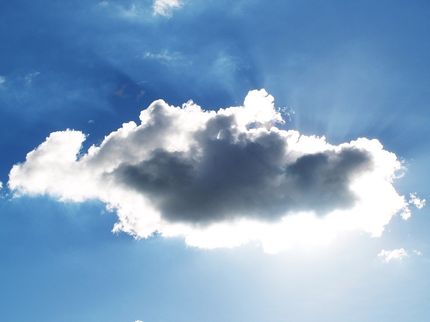Decline in harmful ozone-depleting greenhouse gases
International environmental treaty shows effect
A new study by an international team of researchers, published in Nature climate change, has revealed significant progress in the drive to reduce atmospheric levels of chemicals that destroy the Earth’s protective ozone layer, confirming the success of historic regulations limiting their production and use. Empa scientists contributed to this study with measurements from the high-alpine research station at Jungfraujoch.
The study, led by researchers at the University of Bristol, show for the first time a notable decline in the atmospheric levels of potent ozone-depleting substances (ODS), called hydrochlorofluorocarbons (HCFCs). These HCFCs are also harmful greenhouse gases (GHGs), so their reduction should also lessen global warming.
The Montreal Protocol was agreed to internationally in 1987 to introduce controls on the production and use of ODS, which were once widely used in the manufacturing of hundreds of products, including refrigerators, aerosol sprays, foams and packaging. HCFCs were developed as replacements for chlorofluorocarbons (CFCs). While production of CFCs has been banned globally since 2010, HCFC production and use is currently still being phased out globally, with a completion date slated for 2040. They will be replaced by non-ozone-depleting hydrofluorocarbons (HFCs) and other compounds.
“The results are very encouraging. They underscore the great importance of establishing and sticking to international protocols", says lead author Luke Western from the University of Bristol’s School of Chemistry. “Without the Montreal Protocol, this success would not have been possible. So it’s a resounding endorsement of multilateral commitments to combat stratospheric ozone depletion, with additional benefits in tackling human-induced climate change.”
Decline faster than anticipated
The international study shows the total amount of ozone-depleting chlorine contained in all HCFCs combined peaked in 2021. Because these compounds are also potent GHGs, their contribution to climate change also peaked in that year. This maximum occurred five years earlier than predicted in the last ozone assessment report published in 2022. Although the drop between 2021 and 2023 was less than 1%, it still shows HCFC emissions are heading in the right direction. For Empa scientist and co-author Stefan Reimann, the study represents a "milestone in the history of measures to contain the ozone hole, in which we were able to show for the first time that even the replacement products for the even more ozone-depleting CFCs are now decreasing – and this even five years earlier than expected." According to the Empa researcher, this was only possible thanks to the continuous tightening of international protocols and their verification with the help of atmospheric measurements, for instance on Jungfraujoch.
The results rely on high-precision measurements at globally distributed atmospheric observatories, using data from the Advanced Global Atmospheric Gases Experiment (AGAGE) and the National Atmospheric and Oceanic Administration (NOAA) in the US, including the high-alpine research station on Jungfraujoch, where Empa scientists carried out their atmospheric measurements. "We use highly sensitive measurement techniques and thorough protocols to ensure the reliability of these observations," said co-author Martin Vollmer, an atmospheric scientist at Empa.
Co-author and NOAA scientist Isaac Vimont added: “This study highlights the critical need to be vigilant and proactive in our environmental monitoring, ensuring other controlled ozone-depleting and greenhouse gases follow a similar trend, which will help to protect the planet for future generations.”
Original publication
Luke M. Western, John S. Daniel, Martin K. Vollmer, Scott Clingan, Molly Crotwell, Paul J. Fraser, Anita L. Ganesan, Brad Hall, Christina M. Harth, Paul B. Krummel, Jens Mühle, Simon O’Doherty, Peter K. Salameh, Kieran M. Stanley, Stefan Reimann, Isaac Vimont, Dickon Young, Matt Rigby, Ray F. Weiss, Ronald G. Prinn, Stephen A. Montzka; "A decrease in radiative forcing and equivalent effective chlorine from hydrochlorofluorocarbons"; Nature Climate Change, 2024-6-11
Most read news
Original publication
Luke M. Western, John S. Daniel, Martin K. Vollmer, Scott Clingan, Molly Crotwell, Paul J. Fraser, Anita L. Ganesan, Brad Hall, Christina M. Harth, Paul B. Krummel, Jens Mühle, Simon O’Doherty, Peter K. Salameh, Kieran M. Stanley, Stefan Reimann, Isaac Vimont, Dickon Young, Matt Rigby, Ray F. Weiss, Ronald G. Prinn, Stephen A. Montzka; "A decrease in radiative forcing and equivalent effective chlorine from hydrochlorofluorocarbons"; Nature Climate Change, 2024-6-11
Topics
Organizations
Other news from the department science

Get the chemical industry in your inbox
By submitting this form you agree that LUMITOS AG will send you the newsletter(s) selected above by email. Your data will not be passed on to third parties. Your data will be stored and processed in accordance with our data protection regulations. LUMITOS may contact you by email for the purpose of advertising or market and opinion surveys. You can revoke your consent at any time without giving reasons to LUMITOS AG, Ernst-Augustin-Str. 2, 12489 Berlin, Germany or by e-mail at revoke@lumitos.com with effect for the future. In addition, each email contains a link to unsubscribe from the corresponding newsletter.
Most read news
More news from our other portals
Last viewed contents
Malvern opens new offices, customer support and training facilities in Shanghai
James_W._Black
Bruker acquires Scientific Software Provider Arxspan - Enhanced Focus on Pharma and Biopharma Software and Workflow Solutions

MF Instruments GmbH - Albstadt, Germany






























































